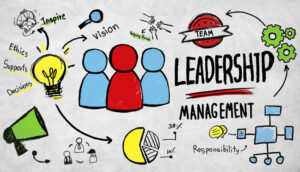It’s a new year and a great chance to make a difference to the contact centre.
We start with a complete look at all of the different ways that you can get off to a kick start and change your contact centre.
Ways to Change Your Contact Centre
1. Improve Agent Performance with Targeted Goals
Enhance agent performance by setting clear, achievable goals and regularly reviewing progress. Consider grouping agents based on performance tiers to identify top, middle, and lower performers.
You can then reward top performers and provide additional training and support to neutral and bottom performers via focus groups with extra support and attention.
Contributed by: Vinod
2. Stay Calm and Show Empathy
When customers have waited in long queues, frustration is natural. Agents should focus on apologising, staying calm, and listening actively to the customer’s concerns.
This calm approach not only helps defuse tension but can also turn a negative experience into a positive one, leaving the customer feeling heard and valued.
Contributed by: Sarah O’Mahoney
3. Involve Frontline Staff in Training Development
Engage frontline staff in creating training materials – they have first-hand insights into what works and what doesn’t.
By involving experienced agents, you ensure training is practical, relevant, and easier for new team members to follow.
Contributed by: Linda
Want tips on how to train your call centre agents? Read our article: 50 Call Centre Training Tips
4. Show Agents the Bigger Picture
Help agents understand how their work directly impacts the contact centre’s overall success. By connecting their performance to key metrics and offering incentives tied to these KPIs, agents can see the value they bring to the organisation and feel more motivated to excel.
Contributed by: Paul
5. Create a Family-Like Atmosphere
Encourage agents to approach customer interactions with empathy and warmth, treating each customer as they would a family member.
This mindset helps build trust and creates a more personalised, positive experience for customers.
6. Implement a Call Review Buddy System
Pair agents together to listen to each other’s calls in small group sessions. This approach allows agents to share feedback, learn effective techniques, and gain insights on handling challenging situations more confidently.
Contributed by: Sarah
7. Involve Agents in Company Changes
Include agents in discussions about company changes, especially those that impact customer experience, as they are on the frontline with customers daily.
Shifting focus from just metrics to improving first-call resolution empowers agents to make meaningful contributions and feel valued in the organisation.
Contributed by: Karina
8. Set and Align Adherence Targets
When implementing schedule adherence within your workforce management plan, start with a pilot team to refine the process before rolling it out to the entire operation.
Work closely with the Operations team to agree on realistic targets, and make sure agents understand the purpose behind adherence monitoring. Emphasize how it promotes fairness and ensures that all staff members are held to consistent standards.
9. Tailor Workforce Management Reporting
When reporting on workforce management (WFM) metrics, it’s important to customise your approach for different audiences.
Senior executives need strategic, high-level reports, while team leaders benefit from a blend of agent-specific and departmental performance data to encourage deeper engagement with the planning team. A successful reporting strategy is dynamic and able to change to meet different business needs.
10. Empower Agents by Involving Them in Scheduling
Involve agents in the creation of shift schedules by offering them different options to choose from or provide feedback on. This approach not only helps ensure schedules meet service level requirements but also promotes fairness and transparency.
Take time to explain the advantages and disadvantages of each schedule, and use fairness features within your WFM system to ensure equity in rotating shifts.
Contributed by: David Evans
For top tips on how to improve your agent scheduling, read our article: The Superhuman Touch – How to Blend Agents and AI for Maximum Impact
11. Host Small Team Competitions
Organise friendly competitions between small teams to create healthy competition. Offer fun rewards, such as a bowling outing, for the winning team.
Contributed by: Lana
12. Let Agents Experience “Manager for a Day”
Allow agents to step into the manager role for a day, giving them a first-hand view of the responsibilities involved.
This practice increases engagement with team goals and helps agents better understand the challenges of managing a contact centre. It’s a valuable way to build empathy and insight across the team.
Contributed by: Darren
13. Create a Dedicated Escalation Team
Avoid assigning team leaders and supervisors to handle escalated calls and emails. This takes valuable time away from coaching and managing their teams effectively.
Instead, form a dedicated escalation group to handle complex issues, allowing leaders to focus on improving team performance.
Contributed by: Michael
14. Hold Weekly Feedback Sessions to Identify Trends
Weekly team feedback sessions can be an effective way to gather valuable insights. These meetings allow team members to share emerging customer trends and recommend process improvements.
By encouraging open communication, this approach helps drive continuous improvement and ensures team input shapes strategies.
15. Align Targets with Positive Behaviour
Consider how performance targets are set for agents. While targets can drive both positive and negative outcomes, it’s essential that they encourage behaviours that promote excellent customer service.
Well-designed targets should inspire agents to deliver the best possible experience for customers.
Contributed by: Kate
16. Create a Centralised Information Hub
To ensure important updates are seen, set up an intranet specifically for the customer service team where all information is organized and regularly updated.
Agents receive a single email prompt to check this site for any new changes, making it their go-to resource when starting their day. This central hub helps streamline communication and keeps everyone informed.
Contributed by: Kypros
17. Hold Fortnightly Sales Meetings
Regular Fortnightly sales meetings give agents a forum to discuss challenges, share insights, and highlight trends they’re noticing with customers.
This keeps managers informed and allows agents to contribute to improvements in sales and service. By acting on agent feedback, you create a more productive, positive environment, showing staff that their opinions are valued.
Contributed by: Samantha
18. Keep Agents Engaged
To boost productivity, it’s essential that agents feel engaged and valued. Build strong relationships through open communication, making sure agents understand their role in the bigger picture.
It is important that agents feel valued, and management can do this by recognising individual motivations and taking steps to do this. All this comes down to ensuring agents feel supported and that their manager has their best interests at heart.
19. Practice an Open-Door Policy
An open-door policy should be more than just a concept; it must be actively practiced. When agents feel they have a voice in decisions, they become more loyal to both their manager and the company.
Encourage an environment where agents at all levels feel comfortable sharing ideas, concerns, and feedback with management.
20. Create an Associate Engagement Committee
Establish an Associate Engagement Committee to provide regular feedback on both strengths and areas for improvement.
Agents should always be aware of their performance, knowing what they’re doing well and where they can grow. This continuous feedback helps improve individual performance.
Contributed by: Annette
21. Focus on Building a Strong Business Case
Many businesses struggle with balancing costs against the need for upgrades, especially in contact centres where investment is often overlooked. When companies focus too much on immediate profits, they risk losing sight of long-term customer value and necessary improvements.
Building a strong business case helps decision-makers understand the need for continuous investment in both technology and service quality.
22. Show Your Agent’s Respect
Respect is the foundation of a strong team. By engaging with agents personally – such as through a letter asking for feedback – you can create trust and improve performance.
As you move up in the business, don’t lose touch with your team; regular communication with agents on the floor keeps morale high and performance strong.
Contributed by: Dave
23. Encourage Agents to Review Their Own Calls
Give agents the opportunity to listen to their own calls, enabling them to recognise both their strengths and areas for improvement.
This practice promotes self-awareness and accountability in their performance. By reflecting on their calls, agents can develop better skills and continuously improve.
Contributed by: Kirsty
To find out how agent self evaluation works, read our article and watch our video: Video: Agent Self-Evaluation – The Pros and Cons
24. Act on feedback From your staff
To improve agent performance, it’s essential to act on feedback from both staff and customers.
This is a valuable opportunity to enhance both the customer and staff experience. Ignoring the feedback means missing out on crucial insights that can help drive positive change.
Contributed by: Sally
25. Turn Your KPIs into a Game
Display key performance indicators (KPIs) on a wallboard or online, updating them daily to keep agents engaged. Make it more exciting by turning it into a game, showcasing both personal and team results.
Offer team-oriented prizes, with individual rewards for the top performers, and allow agents to track their own progress online to see how their efforts impact the team’s success.
Contributed by: Maksym
26. Involve Agents in Their Development
Follow the philosophy – “Tell me and I’ll forget; show me and I’ll remember; involve me and I’ll implement.”
Instead of simply telling agents what they could improve after a call, ask them, “What do you think you could have done better?” This approach encourages self-reflection and allows agents to take ownership of their growth and development.
Contributed by: Antony
27. Implement Speed Dial/Hot Key Transfers
In a contact centre where metrics like hold time, wrap time, and average handle time are closely monitored, every second counts.
Implementing hot key transfers – where agents can transfer calls to departments like Sales, Accounts, or Upgrades with a single button – saves valuable time and enhances efficiency. This not only improves resource utilisation, especially in outbound calling, but also ensures quicker transfers.
Contributed by: Laura Campos

28. Discuss Forecasts Across the Organisation
Regular meetings should be held between Finance, Marketing, and Operations to review the latest forecasts against actual performance and align on the overall strategy.
These discussions provide continuous learning by applying lessons from past forecasts to future planning. Additionally, they provide an opportunity to verify the accuracy of data and ensure that all information is up to date
29. Future-Proof Your Schedules
Create a schedule that works for today and adapts to tomorrow’s needs. Measure schedule fit with a focus on work-life balance, offering flexibility for various lifestyles.
Service level and employee satisfaction are key metrics, but it’s equally important to assess how well shifts align with workload. Experiment with different scheduling methods to find the one that best suits your organisation.
30. Know Your Shrinkages
It’s not your fault if absence, training or adherence is different from forecast, but it is your responsibility to address them before they become a problem.
Track these “shrinkages” daily and communicate them to ensure everyone understands their impact. Support the scheduling team by updating long-term absences and ensuring the plan is accurate before each day’s start.
For the best ways to calculate call centre shrinkage, read our article: What is Call Centre Shrinkage and How to Calculate It?
31. Regularly Review Your On-Hold Messages
It is important to regularly review your on-hold messages to ensure they are relevant, removing outdated marketing content or irrelevant information.
It is a good idea to avoid repetitive and generic phrases like “Your call is very important to us,” which can frustrate customers. Keep the experience simple by limiting options and levels within the IVR system, creating a smoother journey for callers.
Contributed by: Phil Anderson
32. Customer Service is Everyone’s Responsibility
Make it clear across the organization that customer service isn’t limited to a single department – it’s a shared responsibility.
That way everyone within the company is invested, engaged and actively working toward making happy customers part of what they do, on a daily and consistent basis.
Contributed by: Molly Fast
33. Reduce Noise Pollution in the Contact Centre
Reducing noise pollution is essential for enhancing both customer care and staff satisfaction. Many contact centres operate in reduced unsuitable spaces, so investing in noise-cancelling headsets, sound-absorbing materials, and acoustic controls should be a priority.
By addressing background noise and echo, contact centres can create a more focused, comfortable environment for both agents and customers.
For ways to reduce background noise in your contact centre, read our article: How to Reduce Background Noise During a Call
34. Allow Agents to Move Around During Calls
Invest in wireless technology to give agents the freedom to move around during calls, helping to solve problems faster and more efficiently.
If an agent has to sit scrunched up at their desk, then the chances are that their voice will mirror this. We naturally move and gesticulate while we talk, and wireless headsets and tools can help agents speak more clearly, improve their sales techniques and deliver better customer experiences.

35. Increase Staff Motivation
Employee engagement is crucial for a thriving contact centre. Enhance motivation by improving the work environment through flexible working options, remote work opportunities, and promoting work-life balance.
These changes will improve job satisfaction, increase performance, and improve the handling of customer interactions.
Contributed by: Richard Kenny
For ways to increase contact centre staff motivation, why not read our article: Top 20 Motivational Games for the Contact Centre
36. Make Rewards Meaningful and Shareable
Motivational rewards have greater impact when they can be shared with friends and family, offering a more lasting and practical appeal.
With workers putting in long hours, rewards have additional resonance if it can be shared with friends and family. Time outside the office becomes increasingly precious, therefore rewards that enhance this experience boost employees’ appreciation for both the reward and their employer.
These gestures also show that the business values its employees’ well-being beyond the workplace.
Contributed by: Martin Alden
37. Exceeding Expectations Builds Customer Loyalty
Customer loyalty isn’t just about meeting expectations – it’s about consistently exceeding them. Empower front-line agents to make swift decisions, especially when resolving problems or complaints, to turn negative experiences into positive ones.
Going the extra mile leaves a lasting impression and creates true loyalty from your customers.

38. Support Teams Through Organisational Change
Over the past few years, many companies have experienced lots of change like job cuts and workspace adjustments. It is crucial to focus on the well-being of employees through these changes.
Anxiety and resentment can grow without clear, positive leadership and open communication. Use focus group sessions to explore challenges, celebrate positives, and address concerns, creating a pathway for improvement and fostering resilience in your team.
Contributed by: Carolyn Blunt
39. Ensure Your Web Chat Is Always Operational
It’s important to keep your web chat and chatbot services active and reliable at all times. If customers are repeatedly met with a message saying, “This service is not available,” they will quickly lose trust in it as a reliable contact option.
Regular updates and monitoring help ensure these channels provide consistent and effective support and maintains customer satisfaction.
40. Offer Mobile Apps as an Alternative to IVR
IVR can streamline calls by collecting customer details upfront, but it often frustrates users with lengthy menus and complex navigation.
Mobile apps provide a better alternative, allowing customers to input contact and security details directly into a user-friendly platform. With a call-back feature, customers can avoid long hold times, creating a smoother, more efficient experience for everyone.
41. Outsource Demand Spikes
Managing sudden spikes in demand can be costly if you rely on short-term agency staff. Instead, partner with a flexible outsourcer to handle peak traffic, allowing your team to focus on core tasks while reducing staffing and training expenses.
During quieter periods, reverse the model by outsourcing routine tasks, freeing your skilled staff to handle more complex customer needs.
Contributed by: Paul White

42. Stay Informed While Away from the Contact Centre
If you need to be away from the office, set up mobile access to stay updated on your contact centre’s performance.
Track KPIs such as call queues, email queues, agent activity, and dialler campaigns from anywhere. This ensures you can make timely, informed decisions, no matter where you are.
Contributed by: Ken Reid
43. Cascade Training for Consistency
Cascade training and train the trainer are an excellent way to ensure the relevant skills are filtered through the entire contact centre.
Live call handling in a classroom environment, supported by supervisors, is another way to ensure uniformity in responses. It also ensures that all agents are using the technology provided to its fullest.
Contributed by: Kathryn Penn

44. Move Beyond Excel for Forecasting and Scheduling
Relying on Excel for forecasting and scheduling is no longer sufficient, especially as contact centres evolve to handle multi-channel and multi-skill environments.
Modern, cloud-based workforce management (WFM) tools now offer AI-powered forecasting, real-time performance tracking, and automation, making scheduling and adjustments far more efficient.
Contributed by: Chris Dealy
45. Simplify the Approach
Call centres often become overwhelmed by conflicting demands, leading to unnecessary complexity.
Take the time to group problems by common themes or root causes and focus on addressing the most significant issues with existing resources. By simplifying processes, you can find efficient solutions without the need for new investments.
46. Delegate to Create Growth
Effective managers excel at delegation, building trust and confidence in their team. By listening, guiding, and trusting others, they empower employees to take on challenges and grow beyond their own expectations.
Delegation isn’t just about offloading tasks – it’s about developing your team so they’re eager to take on more responsibility.
47. Embrace Failure to Grow
Samuel Beckett’s famous line, “Fail, fail again, fail better,” reminds us that growth comes from embracing failure and learning from it.
Creating a culture of experimentation allows teams to take calculated risks and improve with each attempt. To “fail better,” establish a structured approach to testing ideas and refining processes, ensuring each misstep brings valuable insights for future success.
48. Punches in Bunches: Small Steps Matter
In boxing, victory comes from a combination of punches, not just one big hit – customer experience works the same way.
Instead of chasing a single “big win,” focus on perfecting every small interaction in the customer journey. By optimizing these steps, you’ll create a foundation where going the extra mile truly impacts customer satisfaction.
Contributed by: Paul Sweeney
49. Assign a ‘Super’ User to Projects
Before launching a new project or campaign, assign a ‘super’ user to assist the project coordinator.
This role bridges the gap between planning and execution by addressing agent needs and providing early insights into potential challenges. Their involvement ensures smoother onboarding and better preparedness for going live.
50. Design Effective Seating Plans
Seating arrangements can play a crucial role in training new call centre agents. Place team leaders among agents to provide real-time support and guidance during calls.
Adjusting the computers to be able to swap people around to sit next to relevant project buddies also helps and encourages on-the-job listening and learning.
Reviewing seating plans every six weeks or so can ensure both training and business needs for each client is met and it also makes sure the teams mix.
Contributed by: Joanne Varey
If you want ideas on the best desk layouts in your contact centre, read our article: The Best Desk Layouts for the Contact Centre
51. Embrace Customer Complaints and Feedback
Customer complaints provide business intelligence money can’t buy. Log all complaints, no matter how small, across all channels and analyse them for trends and root causes.
By understanding negative experiences, you can make proactive changes to prevent similar issues and improve overall customer satisfaction.
52. Establish the Root Cause of Complaints
Root cause analysis (RCA) helps identify deep-seated customer satisfaction issues and uncovers early signs of systemic problems.
By understanding the underlying causes of complaints, businesses gain valuable insights into customer attitudes and behaviours. Additionally, RCA creates an audit trail that supports compliance with regulatory requirements for complaint management.
53. Pre-empt Customer Phone Calls
Boost productivity and improve customer satisfaction by proactively addressing common queries before they arise.
For example, during peak times, pre-empt “Where is my order?” calls by updating customers on their order status and offering the option to contact an agent if needed. This approach reduces call volumes while ensuring customers feel informed and supported.
Contributed by: Graham Brierton
54. Rapid Response to Complaints is Essential
Respond promptly and resolve issues effectively, regardless of the complaint’s size. A well-managed complaints process can rebuild customer relationships, as customers value being listened to and seeing their issues resolved.
Often, exceptional service during a complaint leaves a stronger impression than the initial interaction.
For ways to improve complains handling in your contact centre, read our article: 21 Ways to Improve Complaints Handling in Your Contact Centre
55. Reduce Chaser Calls
Chaser calls, where customers repeatedly follow up on their application, request, or complaint, add pressure on both customers and agents. A proactive approach, such as offering regular updates on the status of cases, can significantly reduce the need for customers to call back for information.
By keeping customers informed, businesses improve efficiency and customer satisfaction while easing the burden on contact centre staff.
Contributed by: Martin Scovell
56. Understand Your Customers
A deep understanding of your customers significantly improves contact centre operations and customer experience.
For example, for agents making outbound contact, information on a customer and how they prefer to be contacted, through which channel and at what time, is invaluable.
This not only increases efficiency but also boosts customer satisfaction, as clients feel valued and understood when interactions are personalised to their needs
Contributed by: Mark King
57. Close the Loop on Customer Feedback
Automating your customer feedback system helps capture, process, and resolve feedback efficiently across all channels.
This allows you to analyse both positive and negative responses in real-time, identifying trends and addressing issues quickly. By streamlining this process, you can turn insights into actionable improvements, enhancing customer satisfaction and driving continuous growth.
Closed-loop feedback is a vital tool for driving improvements and engagement. For tips on how to provide closed loop feedback, read our article: How to Provide Closed-Loop Feedback With Employees and Customers
58. Build Up a Pool of Goodwill
Engage your employees in the decision-making process and listen to their feedback to create a positive work environment.
By supporting them when necessary, helping improve their performance, and addressing issues like unproductive team members, you build a stock of goodwill. This will make employees more willing to go the extra mile when needed, benefiting the company as a whole.
59. Track the Quality of Schedules
Monitoring the quality of your schedules is crucial for effective workforce optimization. By tracking peak times and call volumes, you can accurately forecast resource needs and ensure that you meet service level agreements (SLAs).
Regular analysis of scheduling performance helps to improve efficiency and maintain customer satisfaction.
Contributed by: Steve Rosier
60. Make Your Contact Centre an Innovation Hub
As a call centre manager, it’s important to engage regularly with your front-line agents and listen to their insights, giving them a voice in improving operations.
Social communication goes beyond Facebook and Twitter; it includes phone calls, emails, chats, and in-person interactions, which all help connect with diverse customers and employees.
By using enterprise social tools, you can empower your agents to respond quickly and accurately, improving both customer satisfaction and productivity.
Contributed by: Moxie Software
61. Align Customer and Employee Feedback
Correlating Voice of the Customer (VoC) and Voice of the Employee (VoE) feedback provides valuable insights into your team’s performance.
By comparing the two, you can identify high-performing individuals and teams and learn lessons from them to replicate those skills across your call centre.
Contributed by: Claire Sporton
62. Position Your Headset for Clear Sound
For optimal sound quality, position your headset microphone about two fingers’ width away from your mouth.
This allows clarity and helps you be heard more clearly during calls. Additionally, avoid placing the microphone too close, as this can cause distortion or unwanted noise.
63. Stretch Out!
Encourage agents to stand up and stretch their leg muscles regularly while on calls. This simple action can help reduce discomfort, improve circulation, and increase focus during long shifts.
Plus, the person on the other end of the call won’t even notice, allowing agents to feel refreshed without affecting customer interactions
64. Use a Supervisor Cord or Conference Mode
For effective call monitoring and training, invest in a supervisor cord if you’re using corded headsets.
If you are using wireless headsets, opt for models that feature a conference or listen-in mode, allowing supervisors to join calls discreetly for real-time feedback and coaching.
65. Relieve Neck Tension with Exercises
To alleviate neck and shoulder tension, incorporate quick shoulder-shrug exercises and gentle neck stretches into your routine. Avoid the habit of “crunching” a phone handset between your ear and shoulder, as even brief moments of doing so can lead to strain.
Using a headset will not only reduce neck discomfort but also free up your hands, allowing you to multitask more efficiently, whether it’s typing or taking notes during calls.
Contributed by: Jabra
66. Triage Your Calls
Implement triage methods in your contact centre to improve call handling efficiency. By using skills-based routing and assigning priority to different types of contacts, you can ensure that the right agent handles each inquiry.
This approach helps manage call queues more effectively and ensures that urgent or complex issues are prioritized appropriately.
For tips on how to prioritise urgent queries, read our article: How to Prioritize Urgent Queries
67. Use Whisper Prompts
For multi-skilling or call overflow scenarios, prepare your advisors with whisper prompts before they take a call. These prompts, combined with a screen-pop from your CRM system, provide valuable context about the caller’s history, enabling agents to be well-prepared.
This approach ensures that advisors can engage with customers confidently and efficiently, with an overview of relevant data from multiple systems at their fingertips.
Contributed by: Netcall
68. Give Agents the Right Knowledge Tools
As customer service enquiries become more complex, it’s essential that agents are equipped with the right tools and information to handle these crucial interactions.
An AI-powered knowledge base can help handle increasingly complex inquiries. Companies are using machine learning and automation to keep this information up-to-date and relevant. This helps agents to deliver faster, more personalised customer support.
Contributed by: Steve Thurlow
69. Proactively Seek Constructive Feedback
How often do customers say everything is fine when it isn’t? A simple question like, “Is there anything we could have done better?” can reveal important insights.
Many dissatisfied customers don’t speak up, so it’s essential to actively ask for feedback. Using tools like post-contact surveys helps identify areas for improvement, share insights across teams, and enhance customer satisfaction.
Contributed by: Mats Rennstam
70. Never Stop Learning
The contact centre industry is constantly evolving, and what worked last year may already be outdated. Regardless of your role, there are countless opportunities to access new ideas, events, and insights to help you stay ahead.
By continuously learning, you can ensures you remain adaptable and improve your services.
71. Practice Makes Perfect
Don’t be afraid to try new things and keep pushing forward, even if you face challenges along the way.
Mastery takes time and consistent practice, so it’s important to stay persistent and embrace the learning process. With each attempt, you’ll improve, gain valuable insights, and get closer to achieving excellence.
Contributed by: Douglas Jackson
72. Hire Agents Who Reflect Your Customer Base
Different customer demographics have varying preferences for how they engage with businesses. For instance, Gen Z often seeks solutions online before reaching out, while older generations typically call the contact centre first.
By hiring agents who match the characteristics of your primary customer base, contact centres can improve communication, build rapport, and better address the specific needs of each customer group, leading to a more personalized and effective service experience.
73. Create Online Communities
Building online communities where customers can post questions and receive advice from other members can greatly enhance the customer experience.
These platforms allow customers to quickly resolve issues through peer support, reducing wait times and providing immediate solutions. At the same time, contact centre agents can focus on more complex inquiries.
Contributed by: Danny Rippon
74. Avoid Creating a Compensation Culture
While offering compensation can seem like a quick fix, customers are primarily seeking resolutions to their problems, not financial restitution.
Over-reliance on compensation can inadvertently set the expectation that issues should be “bought off,” rather than addressing the root cause. Focus on resolving the issue efficiently and effectively.
Contributed by: Jurgen
75. Focus on Reducing Customer Effort to Build Loyalty
Customer satisfaction is no longer the sole metric for success; instead, reducing customer effort is becoming the key to loyalty.
Customers now expect their issues to be resolved quickly and with minimal hassle, leading many companies to adopt Customer Effort Scores (CES) as a more accurate predictor of brand loyalty.
By identifying pain points – such as long wait times, repeat calls, or channel switching – contact centres can streamline processes and remove obstacles, making it easier for customers to get the help they need.
76. Allow Agents to Monitor Their Own Calls
To make the most of quality monitoring you need to get staff on side. Employees can sometimes feel that these exercises are set up simply to catch them out, so reassure them that the monitoring is being used to improve the service by highlighting good behaviour as well as areas for improvement.
Actively involve agents by getting them to analyse their own calls and teach them to recognise what makes a quality performance.
77. Introduce Flexible Working for Agents
Churn doesn’t have to be a given in the agent lifecycle. Offering flexible shift patterns or remote work options can improve retention by helping staff balance work with personal commitments.
With cloud-based call centres, employees can stay connected to company infrastructure, reducing recruitment costs and increasing job satisfaction, which ultimately lowers long-term churn and retains skilled agents.
Contributed by: Mark Brown
78. Provide Customers With Self-Service Options
Different customer demographics have distinct preferences for how they engage. While older customers may prefer speaking to an agent, younger customers (16-24) often opt for voiceless, mobile-based interactions.
Offering self-service options, such as one-time URLs, allows customers to solve their issues independently, enhancing satisfaction while reducing costs for the organization.
For ideas on how to improve your customer self-service, read our article: Ideas to Improve Customer Self-Service
79. Simplify the Customer Journey
To deliver seamless customer service, businesses should map the typical customer service journey to the profiles they hold for customers.
Most customer interactions revolve around just a handful of common objectives, so by understanding the customer’s profile and anticipated needs, you can reduce friction and streamline the resolution process.
By focusing on these key objectives, you can remove obstacles and make it easier for customers to find the solutions they need.

80. Prioritise Problem Solving Over Speed
In the past, businesses have focused on ensuring a rapid resolution to the customer’s enquiry – sometimes at the expense of the quality of the response.
To address this, organisations need to make sure they have systems in place to identify customers and likely enquiry types and to prioritise interactions appropriately.
Contributed by: Jeremy Payne
81. Create Your Own Customer-Service Videos
Proactively address your customers’ needs by generating digital and social content in the form of videos, blogs and forums.
Videos allow for real-time product demonstration, they enable customers to troubleshoot issues at their own leisure, and are practical as they can be paused and restarted as and when needed.
82. Map Where Customers Fail in Self-Service
Design a self-service strategy with the customer’s preferences and channels in mind.
By mapping the service experience, you can identify common failure points where customers struggle, such as through social response monitoring or live chat escalations.
Contributed by: Joe Doyle
83. Regularly Review Areas for Improvement
Track the customers who contact you most frequently across all channels each month. Analyse these interactions to identify opportunities for better support, whether through improving call, email, or chat experiences, or updating the website to address common needs.
This practice ensures continuous improvement and helps deliver exceptional service while adapting to customer needs.
84. Personalise the Customer Experience
Understand who your customers are to create a more tailored experience. Use available data to recognize patterns, such as call times, and leverage insights from social platforms like Facebook or LinkedIn when appropriate.
A personalised approach makes customers feel valued and enhances their overall experience.
Contributed by: Hugh
85. Build Genuine Customer Connections
Engage with customers in a natural and authentic manner, avoiding rigid scripts or robotic interactions. Speaking to customers as real people helps build rapport, trust, and loyalty.
Encourage agents to actively listen, adapt their tone, and personalize conversations to make customers feel valued. Remember, meaningful human connections are at the heart of great customer service.
Contributed by: Christopher
86. Encourage Agents to Collect Actionable Customer Feedback
Encourage agents to take an active role in gathering meaningful customer feedback during interactions. As the team closest to the customers, they are uniquely positioned to capture valuable insights and identify areas for improvement.
Use these “snippets” of feedback to drive service enhancements and create a better overall customer experience.
Contributed by: Victoria
87. Ditch the Scripts and Focus on Listening
Unless required for regulatory compliance, consider moving away from rigid scripts. Encourage agents to actively listen, understand customer needs, and provide personalized, relevant solutions.
By allowing agents to adapt their responses, interactions become more meaningful and customer-focused.
Contributed by: Dan
88. Prioritise Agent Morale
Your staff play a crucial role in the success of your business, just as much as your customers. High morale and continuous development of in-house teams directly impact their ability to serve customers effectively.
By investing in both your agents and your customers, you create a positive cycle that drives growth and improves the overall customer experience.
89. Update Your Website Based on Real-Time Customer Feedback
Encourage your website team to sit alongside contact centre agents and observe firsthand the challenges customers are facing.
By responding in real-time to these issues, the website can be updated to better meet customer needs. This proactive approach ensures a smoother customer experience and reduces the likelihood of future inquiries.
Contributed by: Peter
90. Learn From Negative Feedback
Negative feedback provides the most valuable insights for improving your service. By reaching out to customers who were dissatisfied through NPS scores or direct feedback, you can better understand their concerns.
Addressing these issues helps refine processes and ensures a more positive experience for future customers.
Contributed by: Kate
91. Prioritise First Contact Resolution Over AHT
Shift the focus from Average Handling Time (AHT) to First Contact Resolution (FCR). Resolving customer issues on the first interaction leads to higher satisfaction and reduces the need for follow-up.
This approach not only improves the customer experience but also drives greater efficiency in the long run.
Want to know how to calculate first contact resolution? Read our article: How to Calculate First Contact Resolution (FCR) – With Formula
92. Ensure Agents Understand Their Role in Customer Retention
Customers have options, and they’ve chosen to engage with your business. It’s essential that agents understand their significant role in retaining these customers and the direct impact it has on the company’s success.
Keep customer satisfaction at the forefront, and avoid letting misaligned metrics distract from delivering exceptional service.
93. Regularly Review Quality Standards
Consistently assess your quality criteria and service standards to ensure they align with your current business goals and customer expectations.
This ongoing review helps adapt to changes in customer needs and market trends. Keeping standards up-to-date ensures your team is always equipped to deliver the best possible service.
Contributed by: Mike
94. Give Agent’s Recourses to Resolve Their Own Issues
Give agents the authority and resources to solve problems independently. This not only boosts their confidence but also improves First Contact Resolution (FCR) rates.
By enabling agents to take ownership, you create a more efficient and empowered team, leading to quicker resolutions and higher customer satisfaction.
95. Leverage Speech Analytics
Utilise advanced speech and text analytics to quickly detect evolving trends or issues across all customer interactions, including calls, chats, and emails.
AI-powered tools can analyse sentiment and uncover patterns in real time, allowing you to respond proactively to customer concerns.
96. Enhance Your IVR with ‘Test and Learn’ Experiment
To optimise your IVR system, implement ‘test and learn’ experiments that explore different phrasing, menu structures, and voice options.
Modern AI and NLP technologies enable more sophisticated testing, allowing the system to adapt to customer preferences and improve interaction accuracy. Regular experimentation and analysis ensure your IVR becomes more intuitive, efficient, and aligned with customer needs.
Contributed by: Peter
97. Understand Customer Needs Before Investing in New Technology
Before investing in new technology, take the time to thoroughly understand your customers and their preferences. Without this insight, you risk implementing solutions that may not align with their needs, potentially disrupting their preferred methods of interaction.
It’s essential to ensure that any new technology enhances the customer experience rather than forcing customers to adapt to unfamiliar or inconvenient channels.
Contributed by: Charlie
98. Don’t Add Technology For the Sake of It
New technology should be introduced with a clear purpose – to enhance and improve existing systems and processes.
Avoid adding technology simply for the sake of staying current or keeping up with trends. Focus on solutions that genuinely improve customer experience, efficiency, and service quality.
Contributed by: John
99. Align Metrics with Customer Needs
Ensure that your metrics are designed to measure what truly matters to the customer, not just what fits within management or budget constraints.
Metrics should reflect customer satisfaction, experience, and outcomes, helping to drive improvements that directly benefit them.
Contributed by: Sarah
If you want to discover more tips and strategies to improve your contact centre, read these articles next:
- 58 Ways to Change Your Contact Centre
- 5 Contact Centre Improvement Strategies
- Customer Service Skills: How to Improve Empathy, Active Listening and Knowledge
Author: Hannah Swankie
Reviewed by: Robyn Coppell
Published On: 2nd Jan 2013 - Last modified: 13th Jan 2025
Read more about - Hints and Tips, Alvaria, Bright, Business Systems, Carl Adkins, Carolyn Blunt, Chris Dealy, IFS, Infinity CCS, Jabra, Jeremy Payne, Ken Reid, Mark Brown, Mitel, Peopleware, Phil Anderson, Poly, Puzzel, Richard Kenny, Rostrvm, Ultra


















Is number 84 encouraging age discrimination in recruitment?
Organisations should encourage their agents to share the cusotmer testimonials/appreciations with their teams. With substantial customer interactions at the Contact Centre, best way to keep the agent motivated and engaged is to share and appreciate the good work done by each agent. Why is it important? In an service environment where customers have options to visit stores and interact with their service providers the service providers have the opportunity to interact and modulate their response, this is not the case for CC. When good interactions are publicied, it acts as a motivator and prompts the officer to improve/sustain the positive “outcome” from every interaction.
thank you for your information on that topic.
Thank you for these 99 contact center improvement tips. These will help my own team at to do things right the first time and all the time.